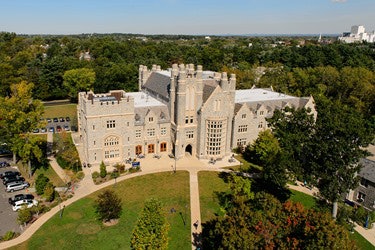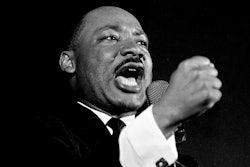
Gail Heriot and Peter Kirsanow criticized UConn’s plan in March 21 letters on commission letterhead to university president Susan Herbst and Catherine Lhamon, assistant secretary of civil rights at the U.S. Department of Education. A news release issued the next day suggested UConn is violating the Civil Rights Act of 1964, a charge the nearly identical letters do not explicitly make.
On its website, Connecticut’s flagship campus has announced space for about 40 students in the Scholastic House of Leaders who are African American Researchers and Scholars, or ScHOLA2RS House. It will be on one floor in a new dorm for 700 students to open in the fall.
Initially, the notice indicated black or mixed race males would have priority. After initial media coverage, that wording was revised to state the learning community is available to any male undergraduate.
“It is hard to avoid the conclusion that ScHOLA2RS House was intended to promote racial isolation on campus,” Heriot and Kirsanow wrote. “Moreover, it is impossible to avoid the conclusion that it will in fact promote racial isolation on campus.”
A statement issued by UConn spokeswoman Stephanie Reitz disputed the charges about the purpose and effect of the housing arrangement.
“This learning community will not be separate or segregated, nor is it specifically limited to one race,” the statement said. “Participation is, of course, entirely voluntary and its programming will be open to all in the university community, not only black male students.”
The university generally cited research that shows learning communities, cohorts of students who receive academic and social supports, can increase retention. The approach has grown in popularity on college campuses. Not all are residential.
At UConn, the overall graduation rate was 83 percent in 2015, but 55 percent for African American males.
Other colleges have residential communities geared to black students or Black male students, which Heriot and Kirsanow also objected to. They cited ones at the University of Iowa and University of Minnesota.
The UConn declared the concept “not new” and noted similar programs exist, in addition to Minnesota’s, at the Santa Barbara and Davis campuses of the University of California, Harris-Stowe State University in St. Louis and Texas A&M University.
The Education Department said it had not received the letter sent to Lhamon, who directs its Office for Civil Rights. “However, when we do, we look forward to responding,” said Dorie Turner Nolt, the department’s press secretary.
Before Heriot and Kirsanow sent their letters, fellow members rejected their proposal to send the two letters in the name of the eight-member commission. On the 4-2 vote, they were the only two members to support the motion.
Another member, David Kladney, wrote Herbst on March 23 criticizing Heriot and Kirsanow.
“The suspicion alleged in (the) letter by my two colleagues that the aim of the program is to promote racial isolation is very disappointing,” Kladney said. “Their fears are premature.”
Instead, Kladney praised UConn for the planned effort to improve the graduation rate of black men. “Developing programs to help African-American men and other races concentrate on their studies in a supportive social context is worth the attempt,” he said.
In a postscript, Kladney quoted a US Senate committee’s report last summer that attempted to reduce confusion about who speaks for the commission. The report’s language reserves its letterhead “only for items that reflect the views of the commission” and directs that individual commissioners “shall not use official letterhead as part of their communications.”
Kladney’s letter to Herbst was not sent under the letterhead. Heriot’s and Kirsanow’s two letters were, though their first sentence indicates they were speaking for themselves and not the commission.
The news release about the commissioners’ letters is identified as from the New American Civil Rights Project, “a group of present and former members and staff of the United States Commission on Civil Rights and its state advisory committees who share a commitment to limited government and to equal protection under the laws.”
All three members debating UConn’s initiative are congressional appointees to the commission. Heriot, a law professor at the University of San Diego, is a political independent. Kirsanow, a Cleveland lawyer, is a Republican. Kladney, a lawyer in Reno, Nev., is a Democrat.


















